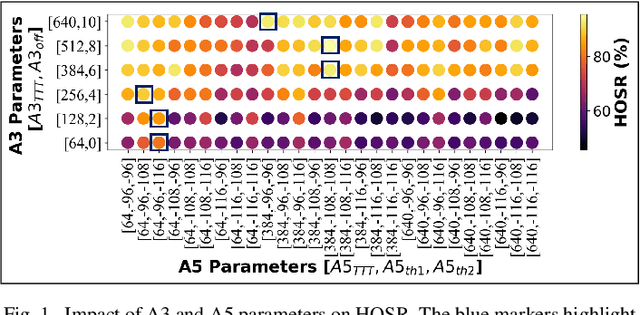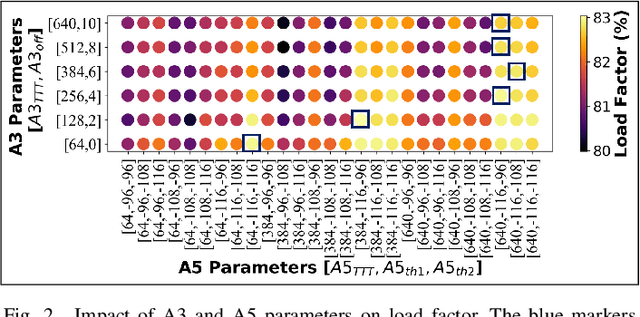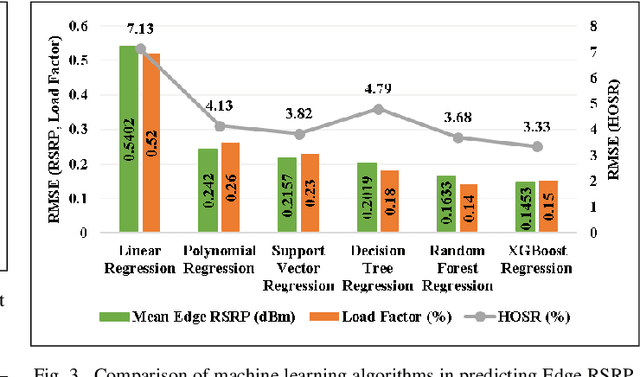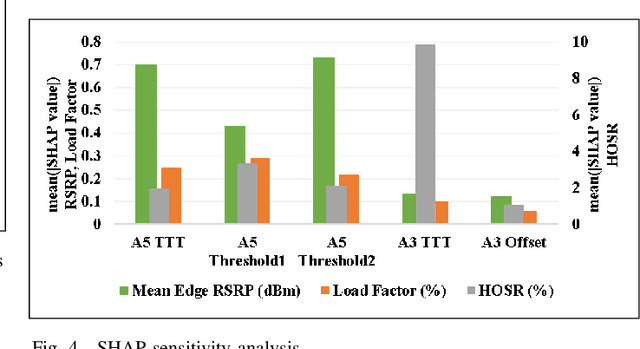Adnan Abu-Dayya
Unauthorized Drone Detection: Experiments and Prototypes
Dec 02, 2022Abstract:The increase in the number of unmanned aerial vehicles a.k.a. drones pose several threats to public privacy, critical infrastructure and cyber security. Hence, detecting unauthorized drones is a significant problem which received attention in the last few years. In this paper, we present our experimental work on three drone detection methods (i.e., acoustic detection, radio frequency (RF) detection, and visual detection) to evaluate their efficacy in both indoor and outdoor environments. Owing to the limitations of these schemes, we present a novel encryption-based drone detection scheme that uses a two-stage verification of the drone's received signal strength indicator (RSSI) and the encryption key generated from the drone's position coordinates to reliably detect an unauthorized drone in the presence of authorized drones.
Machine Learning Aided Holistic Handover Optimization for Emerging Networks
Feb 06, 2022



Abstract:In the wake of network densification and multi-band operation in emerging cellular networks, mobility and handover management is becoming a major bottleneck. The problem is further aggravated by the fact that holistic mobility management solutions for different types of handovers, namely inter-frequency and intra-frequency handovers, remain scarce. This paper presents a first mobility management solution that concurrently optimizes inter-frequency related A5 parameters and intra-frequency related A3 parameters. We analyze and optimize five parameters namely A5-time to trigger (TTT), A5-threshold1, A5-threshold2, A3-TTT, and A3-offset to jointly maximize three critical key performance indicators (KPIs): edge user reference signal received power (RSRP), handover success rate (HOSR) and load between frequency bands. In the absence of tractable analytical models due to system level complexity, we leverage machine learning to quantify the KPIs as a function of the mobility parameters. An XGBoost based model has the best performance for edge RSRP and HOSR while random forest outperforms others for load prediction. An analysis of the mobility parameters provides several insights: 1) there exists a strong coupling between A3 and A5 parameters; 2) an optimal set of parameters exists for each KPI; and 3) the optimal parameters vary for different KPIs. We also perform a SHAP based sensitivity to help resolve the parametric conflict between the KPIs. Finally, we formulate a maximization problem, show it is non-convex, and solve it utilizing simulated annealing (SA). Results indicate that ML-based SA-aided solution is more than 14x faster than the brute force approach with a slight loss in optimality.
Interpretable AI-based Large-scale 3D Pathloss Prediction Model for enabling Emerging Self-Driving Networks
Jan 30, 2022



Abstract:In modern wireless communication systems, radio propagation modeling to estimate pathloss has always been a fundamental task in system design and optimization. The state-of-the-art empirical propagation models are based on measurements in specific environments and limited in their ability to capture idiosyncrasies of various propagation environments. To cope with this problem, ray-tracing based solutions are used in commercial planning tools, but they tend to be extremely time-consuming and expensive. We propose a Machine Learning (ML)-based model that leverages novel key predictors for estimating pathloss. By quantitatively evaluating the ability of various ML algorithms in terms of predictive, generalization and computational performance, our results show that Light Gradient Boosting Machine (LightGBM) algorithm overall outperforms others, even with sparse training data, by providing a 65% increase in prediction accuracy as compared to empirical models and 13x decrease in prediction time as compared to ray-tracing. To address the interpretability challenge that thwarts the adoption of most ML-based models, we perform extensive secondary analysis using SHapley Additive exPlanations (SHAP) method, yielding many practically useful insights that can be leveraged for intelligently tuning the network configuration, selective enrichment of training data in real networks and for building lighter ML-based propagation model to enable low-latency use-cases.
 Add to Chrome
Add to Chrome Add to Firefox
Add to Firefox Add to Edge
Add to Edge